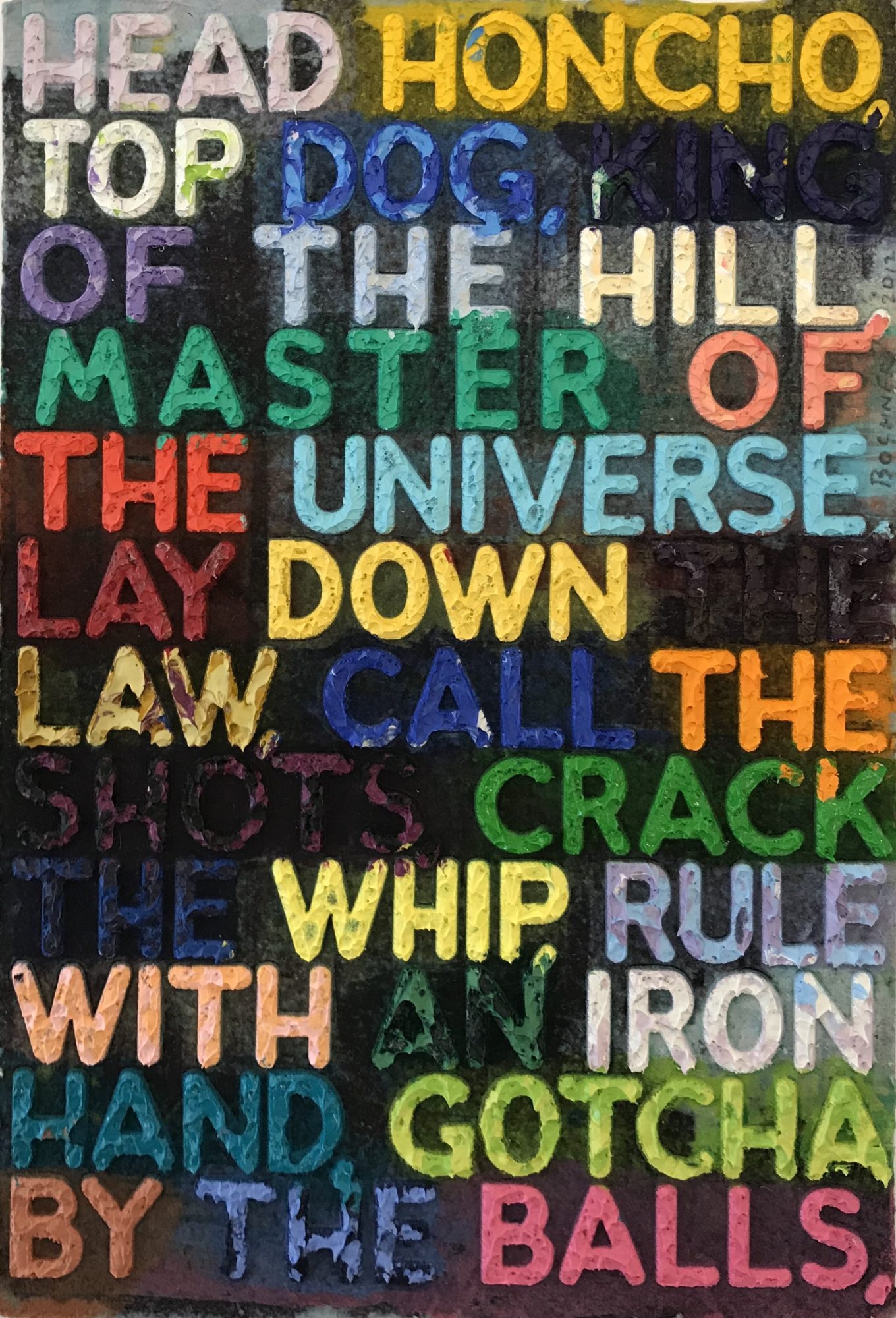Mel Bochner – Head Honcho
Mel Bochner, Head Honcho is a unique Monoprint with Collage, Engraving, Embossment, and Paint on Twinrocker handmade paper. This monoprint made in 2012 is signed and dated in the upper right recto.
Mel Bochner’s approach and materials constantly vary; in fact, the artist formally disavowed allegiance to a single material in his famous essay titled “the Medium and the Tedium” (2010). Bochner—who has produced paintings, installations, and photography—is noted to be one of the most influential pioneers of Conceptual art, and the organizer of the first Conceptual art exhibition in 1966. A recurring theme in Bochner’s work is the relationship between language and physical space or color. This is famously demonstrated in his “Measurement” installations of the late 1960s, visualizing the exact dimensions of rooms and exhibition spaces, and thesaurus-inspired paintings of a single word and its synonyms. Bochner formally studied under Douglas Wilson and Wilfred Readio, though his eventual style would draw strong influence from the works of Clyfford Still and Jean Dubuffet.
| Title | Head Honcho |
|---|---|
| Medium | Collage, Engraving, Monoprint |
| Year | 2012 |
| Edition | Unique |
| Signature | Signed, dated |
| Size | 12 x 8 (in) 30 x 20 (cm) |
| Price | SOLD |
Description
Mel Bochner, Head Honcho is a unique Monoprint with Collage, Engraving, Embossment, and Paint on Twinrocker handmade paper. This monoprint made in 2012 is signed and dated in the upper right recto.
Mel Bochner’s approach and materials constantly vary; in fact, the artist formally disavowed allegiance to a single material in his famous essay titled “the Medium and the Tedium” (2010). Bochner—who has produced paintings, installations, and photography—is noted to be one of the most influential pioneers of Conceptual art, and the organizer of the first Conceptual art exhibition in 1966. A recurring theme in Bochner’s work is the relationship between language and physical space or color. This is famously demonstrated in his “Measurement” installations of the late 1960s, visualizing the exact dimensions of rooms and exhibition spaces, and thesaurus-inspired paintings of a single word and its synonyms. Bochner formally studied under Douglas Wilson and Wilfred Readio, though his eventual style would draw strong influence from the works of Clyfford Still and Jean Dubuffet.
Mel Bochner is recognized as one of the leading figures in the development of Conceptual art in New York in the 1960s and 1970s. Emerging at a time when painting was increasingly discussed as outmoded, Bochner became part of a new generation of artists which also included Eva Hesse, Donald Judd, and Robert Smithson – artists who, like Bochner, were looking at ways of breaking with Abstract Expressionism and traditional compositional devices.
Bochner came of age during the second half of the 1960s, a moment of radical change both in society at large as well as in art. While painting slowly lost its preeminent position in modern art, language moved from talking about art to becoming part of art itself. Bochner has consistently probed the conventions of both painting and of language, the way we construct and understand them, and the way they relate to one another to make us more attentive to the unspoken codes that underpin our engagement with the world.
Additional information
| Title | Head Honcho |
|---|---|
| Medium | Collage, Engraving, Monoprint |
| Year | 2012 |
| Edition | Unique |
| Signature | Signed, dated |
| Size | 12 x 8 (in) 30 x 20 (cm) |
| Price | SOLD |


